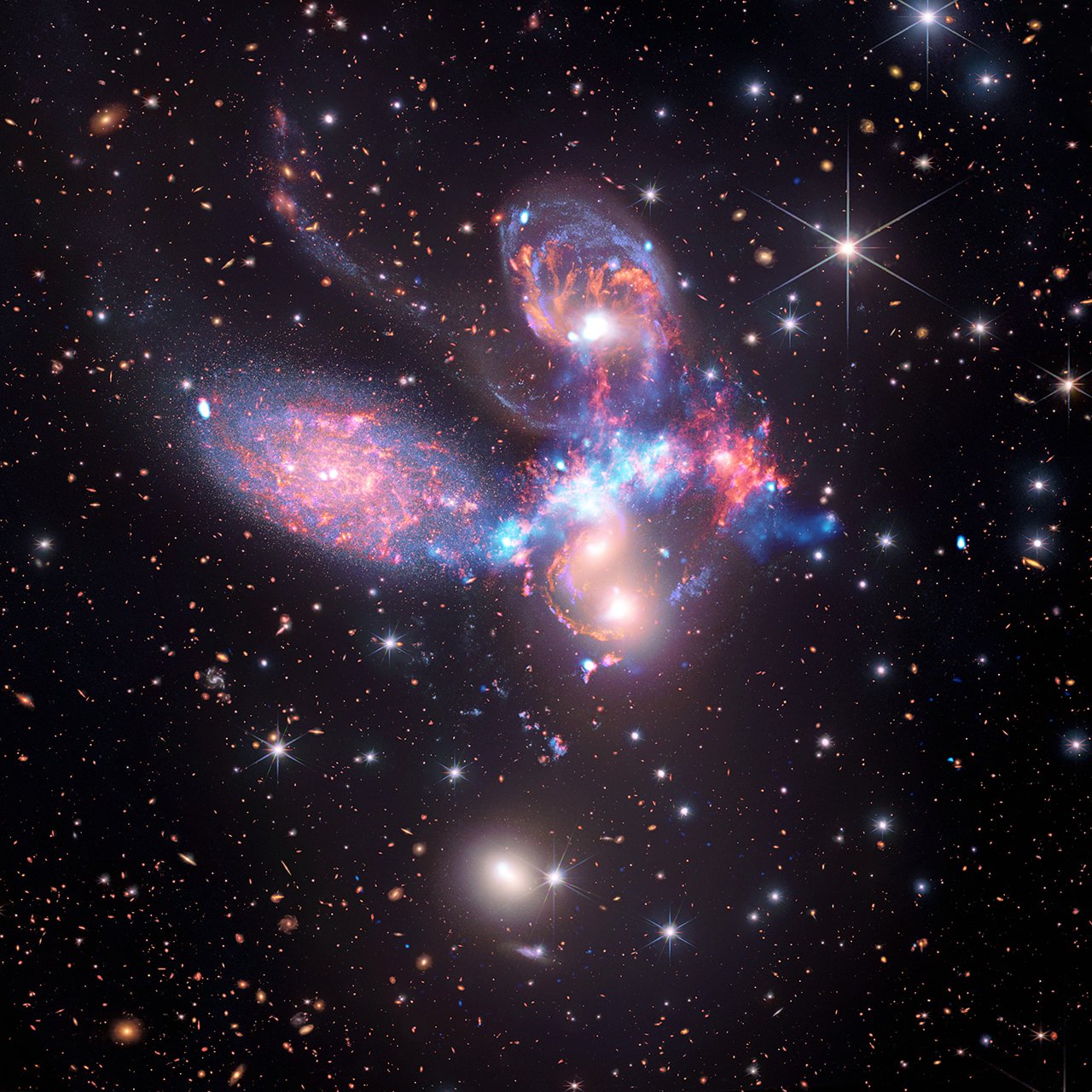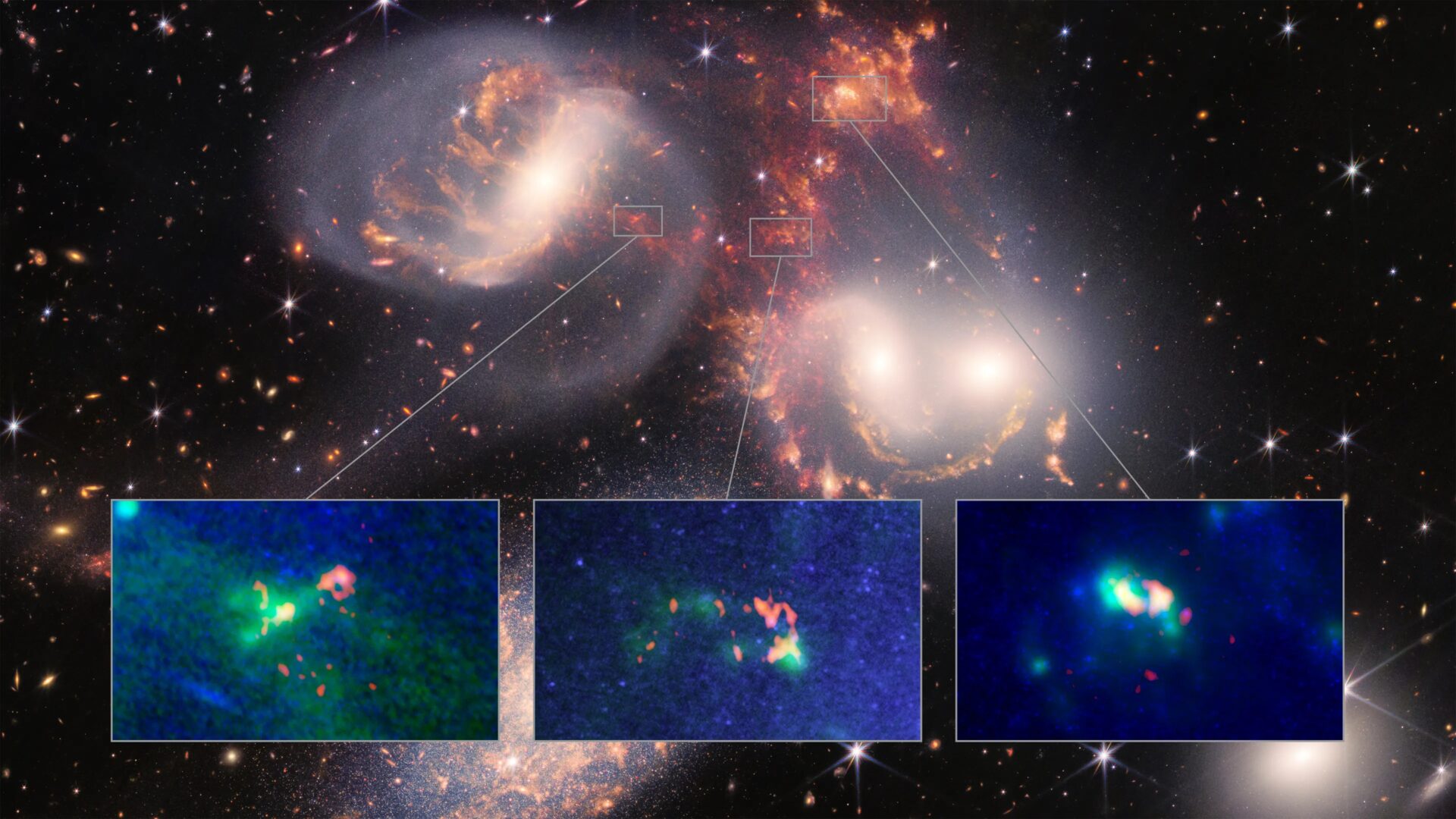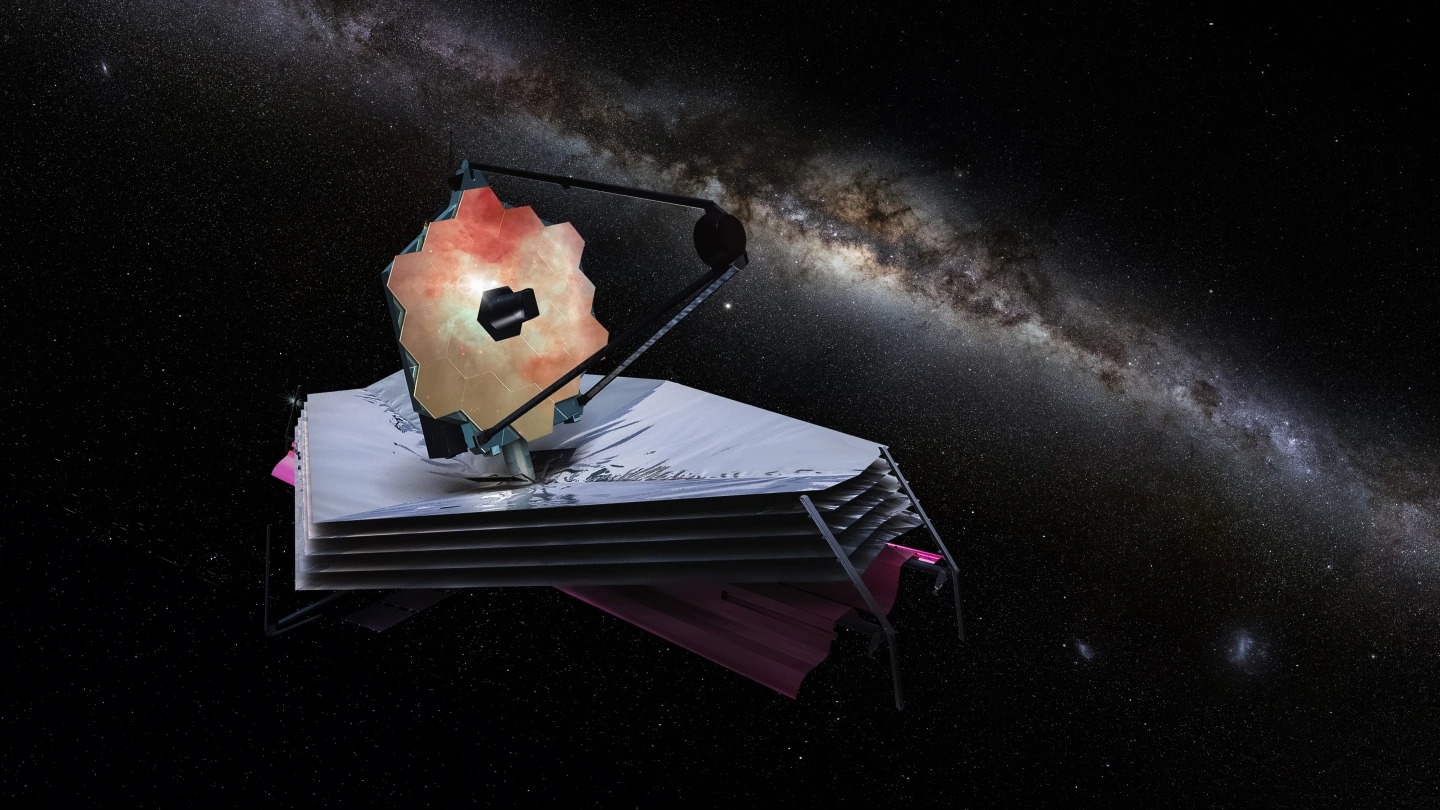The James Webb Space Telescope has obtained a phenomenal image of the famous object called the Stephan’s Quintet. A powerful telescope together with the ALMA Observatory helped to discover a hidden secret, previously invisible to astronomers. During the annual press conference, the American Astronomical Society announced that they had discovered the absolute chaos that was happening among these five bright galaxies.

One of the four galaxies, named NGC 731b, also known as Intruder, generates a giant shock wave that is several times larger than the entire Milky Way. The wave speed is 800 km/s. At that speed, the journey from Earth to the Moon would take only eight minutes. Along the way, this extremely intense shock wave not only destroys everything in its path, but also excites clouds of warm and cold molecular hydrogen among the quintet, which can trigger the process of star birth.

“The molecular cloud that permeates the intergalactic gas and leaves chaos behind is extremely rare and has not yet been fully studied. The new data show that we have taken the next step in understanding the chaotic behavior and turbulent life cycle of molecular gas clouds in the Stephan’s Quintet,” said Bern Emonts, an astronomer at the National Radio Astronomy Observatory and one of the project researchers.
Astronomers who have observed this phenomenon through James Webb and ALMA say that stars can form inside these clouds, and a small collision of two such clouds of gas can even trigger the formation of a completely new galaxy.

The importance of the data collected by James Webb in observing this shockwave can also have huge implications. For example, it may help scientists understand how the turbulent influence in the intergalactic environment helped to form and influenced the further evolution of the early Universe.
Earlier we reported on how James Webb discovered its first exoplanet.
Follow us on Twitter to get the most interesting space news in time
https://twitter.com/ust_magazine

